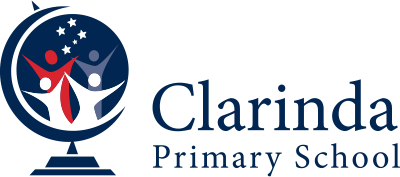English
At Clarinda Primary School, we are committed to developing confident, capable and enthusiastic readers, writers and communicators. Our literacy program is guided by the Victorian Curriculum and delivered through the Victorian Teaching and Learning Model 2.0 (VTLM 2.0). We place a strong emphasis on explicit instruction and systematic phonics, ensuring every child builds a solid foundation for literacy success.
Literacy is taught across three interconnected strands:
-
Reading and Viewing
Students learn to read with accuracy, fluency and understanding. We begin with systematic phonics to teach decoding and word recognition. As students progress, we focus on developing comprehension strategies, vocabulary knowledge and the ability to interpret and analyse a wide range of texts. -
Writing
Our writing program teaches students to plan, draft, edit and publish texts for different purposes and audiences. Students learn about text structure, grammar and spelling, with explicit instruction in phonics, morphology and word patterns. Spelling is taught in a structured and sequential way, helping students make connections between sounds, letters and meaning. -
Speaking and Listening
Oral language is the foundation of literacy. Students are supported to express their ideas clearly, listen actively, and participate in conversations and group discussions. These skills build confidence and are essential for success across the curriculum.
Assessment and data are used regularly to inform teaching, target individual needs, and ensure all students are supported to grow as literate, lifelong learners. At Clarinda PS, literacy is at the heart of everything we do.
We are passionate about helping our students grow into lifelong readers and writers, and we know that the Clarinda Instructional Model of teaching allows us to do this.
Clarinda PS is one of those very schools.
There are an increasing number of schools that I recommend educators to go and visit. Clarinda has been hosting visits for me for a couple of years now (COVID permitting!). They have quality whole school approaches in the teaching of reading and writing, and are now building this into the numeracy space.
When it comes to phonics, Clarinda follows the research.
Despite what you might hear, the research is clear that phonics instructions should be systematic (not to be confused with synthetic!), and explicit. For some schools this can mean that all students receive the same instruction, and for some students, this can extend well beyond when it is needed. Too much of a focus on phonics can impact on a student’s ability to make meaning from texts.
What schools like Clarinda do is that they use a scope and sequence, combined with assessment, to differentiate what the whole class needs, what small groups need, and what individuals need. Once students have completed the assessment they no longer need phonics instruction. Phonics is an important, but only one part of their comprehensive literacy program.
The assessment and scope sequence Clarinda use, is from a resource by Heidi Anne Mesmer titled, ‘Letter Lessons and First Words’.
The book provides suggested curriculum, activities and timelines for each aspect of the scope and sequence. Clarinda use this as a starting point, and they have also created their own resources to complement this work.
If you’re interested in reading about phonics further I would recommend the following article where Mesmer has teamed up with Nell Duke – ‘Phonics Faux Pas: Avoiding Instructional Missteps in Teaching Letter-Sound Relationships’.
Danny Hyndman – Educational Consultant for Clarinda PS
Please click here for more information about the Reader’s and Writer’s Workshop Model at Clarinda Primary School.
